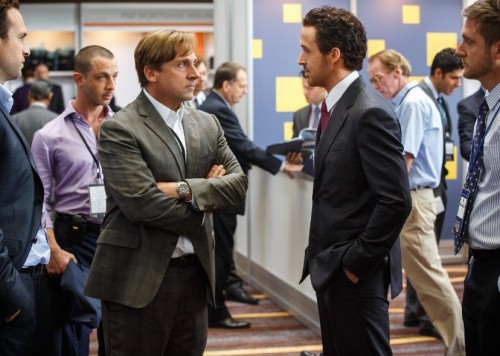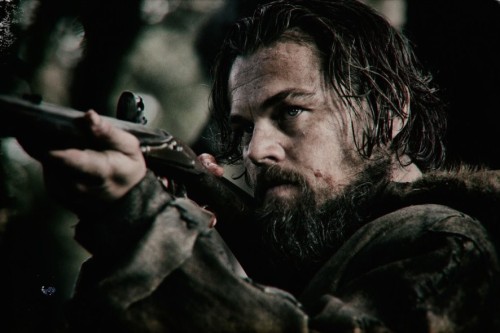Do you know that feeling you get right before you see a car crash into another car? Or that feeling when you drop something fragile and there’s nothing you can do in that split second when time seems to stand still before it hits the floor? Now imagine having that feeling for nearly two hours straight. That’s “Sicario” in a nutshell.

Although there is nothing especially new or revolutionary about it, all the elements of “Sicario” add up to make something that is better than the sum of its parts. Sure, other movies have done some of the elements better.
Emily Blunt’s performance isn’t as good as Jessica Chastain’s in “Zero Dark Thirty,” the sound design and editing isn’t as good as “The Hurt Locker” or “Black Hawk Down” and Benicio del Toro’s performance isn’t as good as…well, Benicio del Toro in “Traffic.”
But in terms of 21st century military movies that mostly take place in deserts or a similar climate, this one is one of the better ones, mostly due to how unforgiving all the elements are. The production side of it makes you believe what’s happening, the technical side puts you right there experiencing it and the actors and screenplay connect you to it and make it personal.
The word sicario comes from ancient Jerusalem as the name of killers who hunted down Romans who invaded their homeland. In Mexico, sicario has a similar meaning: hitman.
After years of small jobs and rising through the ranks of her male-dominated occupation, young and principled FBI agent Kate Macer (played by Emily Blunt) receives a top assignment. Recruited by a mysterious government official (played by Josh Brolin), Kate joins a task force assigned to deal with the escalating war against drugs.
Under the unauthorized direction of the intense and shadowy Alejandro (played by Benicio del Toro), the team travels back-and-forth across the U.S.-Mexican border, taking on various missions to get to one cartel boss (played by Bernardo Saracino) and use him to flush out a bigger one (played by Julio Cesar Cedillo).
Although she doesn’t quite understand what is going on, nor given any information about what the team is doing next until they’re doing it, Kate soon learns the awful truths behind the drug trade between Mexico and the U.S. and the unprecedented violence that comes with it.

Regardless of what his character does or says, del Toro’s performance is captivating. He’s excelled in similar stories before, like the previously mentioned “Traffic” and the more recent “Savages,” but his character here has so much more depth. Until the very ending, Kate doesn’t know what his real intentions are, meaning the audience doesn’t know either. It’s safe to say he’s not an F.B.I. agent, but beyond that it’s anybody’s guess.
Del Toro shows us two sides of the same man, often in the same scene when you’d least expect it. He can be brash and unforgiving, and then suddenly suffering and on the verge of tears due to his troubled past.
When he’s awake he’s a shark with the one purpose of taking down the bad guys on either side of the fence, but when he’s asleep he shudders and shakes, obviously affected by whatever nightmare he’s having. The only question in, what nightmare is worse than the one he and Kate are living throughout the movie.
Director Denis Villeneuve is no stranger to high-tension dramas, first breaking out in the U.S. with “Prisoners” in 2013. Just like with “Prisoners,” the cinematography is one of the stars of this movie. The beautiful use of wide widescreen cameras captures the vast emptiness and peacefulness of the southern U.S. and Mexican desert.
But when up-close with specific characters, the slow and continuous shots enhance the tension and fear Kate often feels throughout. There is hardly any shaky cam and hardly an awkward angle. Everything we see is straight on with no tricks. It could be an expertly shot documentary, making it even more terrifying when the action gets real.

Part of the thrill, however, is just how unglorified and ugly the action sequences are. Now they are shot and executed brilliantly, but this isn’t a Quinten Tarantino or Brian de Palma picture. Movies by those men are violent, but Villeneuve’s movies are about violence and all the meanings behind it.
He shows in real time everything that leads up to the action sequences, has a quick 20- or 30-second action scene, and then shows how it affects the actors over the next few hours. For me, that is much more real and much more haunting, and I’d rather watch that than five minutes of unrealistic guns blazing and fireworks explosions.
Although it’s a non-stop tension builder highlighting violence and its effects, the heart of the movie is all about morality of relationships. Without giving too much away, the characters Kate interacts with all have faults in what they’re fighting for. And as she learns the truth behind their operation, her morality in what she is fighting for is tested quite brutally. Unfortunately, that’s the only place the movie tends to go wrong.
When deeper issues and character studies are brought into the mix, the movie can almost come to a complete halt. But as a thriller about the truths of the drug trade and the violence surrounding it Kate discovers in her 72 hours or so south of the border, it’s excellent.































 If nothing else, most of the James Bond films are some of the best-looking movies out there, and the ones starring Daniel Craig are no different. Director Sam Mendes knows how to shoot a film well—just watch “American Beauty” or “Road to Perdition.” The marriage of Mendes’ style and Ian Fleming’s suave secret agent made a lot of noise in 2012 with “Skyfall,” the Bond film many consider one of the best five.
If nothing else, most of the James Bond films are some of the best-looking movies out there, and the ones starring Daniel Craig are no different. Director Sam Mendes knows how to shoot a film well—just watch “American Beauty” or “Road to Perdition.” The marriage of Mendes’ style and Ian Fleming’s suave secret agent made a lot of noise in 2012 with “Skyfall,” the Bond film many consider one of the best five.